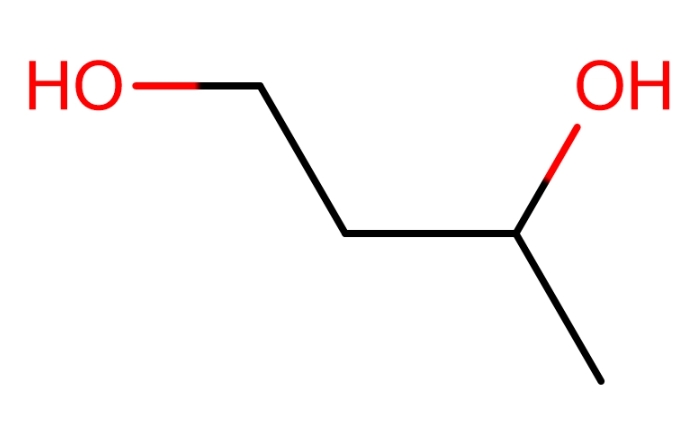1,3-Butanediol
CAS Number: 107-88-0
Name: 1,3-Butanediol
Molecular Formula: C4H10O2
Molecular weight: 90.121
EINECS number: 203-529-7
INCHI: InChI=1/C4H10O2/c1-4(6)2-3-5/h4-6H,2-3H2,1H3
Basic properties
Density: 1.005 g/mL at 25 °C (lit.)
Melting point: -54 °C
Boiling point: 203-204 °C(lit.)
Flash point: 250 °F
WATER SOLUBILITY: SOLUBLE
1.3-Butanediol is an natural compound with a molecular formulation of C4H10O2, by and large used in the instruction of polyester resin, polyurethane resin, plasticizer, etc., and additionally used as a humidifier and softener for textiles, paper and tobacco.
Chinese Name: 1,3-Butanediol
Chinese aliases: 1,3-Dihydroxybutane; (±)-1,3-Butanediol
English alias: Butanediol; butane-1,3-diol; (3S)-butane-1,3-diol; (3R)-butane-1,3-diol
CAS:107-88-0
EINECS:203-529-7
FEMA registration number: 2842
Physical and chemical indicators
Appearance: colorless, viscous liquid.
Melting point (°C): <-54
Boiling factor (°C): 207°C at 760 mmHg
Relative density (water = 1): 1.01
Density: 1.001g/cm3
Refractive index: N20/D1.4385-1.4405(LIT)
Relative vapor density (air = 1): 3.2
Saturated vapor strain (kPa): 0.008 (20°C)
Vapour pressure: 0.0541mmHg at 25°C
Heat of combustion (kJ/mol): 595.0
Flash factor (°C): 121
Ignition temperature (°C): 393.9
Lower explosive restriction percent (V/V): 1.9
Property description: colorless viscous liquid. Melting factor <-54 °C, boiling factor 207 °C at 760 mmHg, relative density 1.01 (20/4 °C), viscosity (25 °C) 103.9 mPa·s, refractive index n20/D1.4385-1.4405 (lit), floor anxiety (25 °C) 37.8mN, m, flash factor 121 °C. Soluble in water, acetone, methyl ethyl (methyl) ketone, ethanol, dibutyl phthalate, castor oil, nearly insoluble in aliphatic hydrocarbons, benzene, toluene, carbon tetrachloride, ethanolamines, mineral oil, linseed oil. When hot, it can dissolve nylon, and can additionally in part dissolve shellac and pine resin. Due to the excessive boiling point, it is handy to be oxidized by using air all through distillation underneath atmospheric pressure, so it is really useful to distill beneath decreased pressure. Odorless, barely bittersweet. It is rather hygroscopic and can take in moisture equal to 12.5 of its very own weight (when the relative humidity is 50) or even 38.5 of the water (when the relative humidity is 80).


Related News
Submitted successfully
We will contact you as soon as possible







